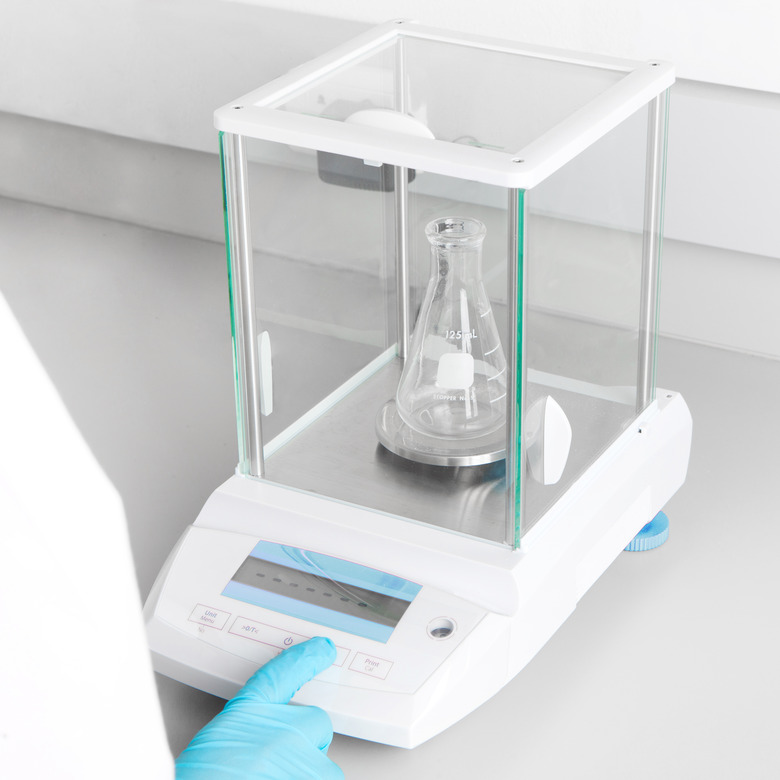In most physics or chemistry classes, students learn about the terms “mass,” “density” and their relationship. Mass usually refers to the amount of matter in an object, while density is the physical property of matter. By definition, density is mass per unit volume where volume is the space the object occupies. The symbol for density is the Greek letter “rho” or “ρ.” Although you can easily find mass from the equation given for density, there are a few rules you need to follow to solve correctly these types of problems.
1. Density Formula
To find mass from density, you need the equation:
(rho = frac{M}{V})
The proper SI units for density are g/cubic cm (grams per cubic centimeters), alternately expressed as kg/cubic m (kilograms per cubic meters).
2. Rearranging Density Formula
Use the density equation to solve for mass “M” in terms of volume “V” and density “ρ,” by multiplying both sides of the equation by volume “V.” The equation then becomes:
(M=rho V)
3. Given the Density
Practice finding the mass from density using this example. An object in the form of a cube with height, length and width equal to 1 cm has a density of 6 g/cubic cm.
4. Finding Volume
Find the volume to solve for mass (M) by knowing that the formula for the volume (V) of a cube is:
(V=L^3)
From Step 3, these are all equal to 1 so volume of the cube is 1 cubic cm.
5. Calculate Mass
Substitute the values for density (ρ) from Step 3 and the value for volume (V) from Step 4 into the mass equation and multiply to get
(M=rho V=6times 1 = 6text{ grams})
The mass therfore equals 6 grams. Remember to check your units, as they need to be in the proper SI units.
TL;DR (Too Long; Didn’t Read)
Be sure that the volume units match the denominator units in the density. If those units don’t match, you must perform a conversion so they will match. For example, when you are given a volume in cubic meters and a density in grams per cubic centimeters, you need to convert the volume from cubic meters to cubic centimeters.

